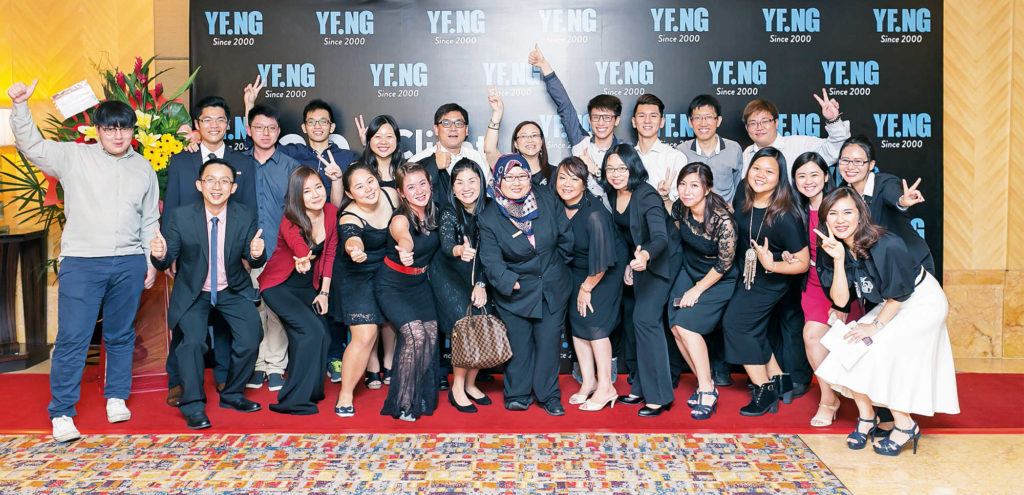
What is it like to participate in the MIA-MICPA Quality Assessment Programme (QAP)? Tony Ng, one of the earliest QAP participants, shares his insights.
Reporting by the Mia SMP department
Eighteen months after MIA and MICPA introduced the QAP, MIA caught up with Tony Ng of sole proprietorship YF Ng to get a practitioner’s perspective on QAP. Tony commenced the QAP from June 2017 and received his final report in November 2017.
YF Ng has been around since 2000. The firm mainly services audit and has more than 1,000 clients. Tony himself has 18 years’ experience in public practice and specialises in auditing.
Below, Tony tells us about his experience:
How did you know about the QAP Programme?
I received an email blast from MIA and thought that this would be good for the firm because we are committed to improving audit quality to serve our clients better. Hence, I forwarded the email to my team for further consideration and action. Since I am a sole practitioner, we do not have a second partner to look at the firm’s Quality Controls. I also wanted an independent review of my firm’s policies and procedures.
Describe the QAP Process briefly.
- First, we had to complete the Practice Profile Information Questionnaire, which can be downloaded from the SMP website.
- Prior to the entry meeting, the reviewers sent a questionnaire with a list of documents required for QAP.
- We were required to complete the questionnaire and prepare the documents for the QAP.
- The Entry meeting was conducted to obtain a better understanding of the firm’s policies and procedures and was attended by both partner and senior staff.
- The reviewers then conducted the review for three days followed by an exit meeting to discuss on the findings
- The firm then prepared its remediation plan with the assistance of the reviewers.
- The final QAP report was issued, highlighting the findings of the reviewers and the remediation plans to be undertaken by the firm. We were also advised that we may enrol for a follow-up review in the future.
What was your main take-away from the programme?
- We are now more aware of the importance of audit documentation in an audit engagement.
- We hope to significantly comply with the requirements of the six elements of ISQC 1.
In what way do you think the QAP will help you in your future audit?
Previously, the audit was more focused on substantive audit procedures. We may over audit and under audit in certain areas, with no assessment of the audit risk. Hence, in future, we will place more emphasis on audit planning and risk assessment and link risk assessment to audit procedures performed. We will also look into testing of controls where applicable.
In your opinion, is there any area where you think the QAP could be further improved?
In my opinion, rather than just reviewing one selected client, the reviewer should review more files in various industries within the stipulated budget. This will be more beneficial for the firm under assessment.
In your experience, do you consider the programme value for money?
Yes, it was value for money. The reviewers were all from practice and they were superb. They could relate to the practical problems faced by a SMP.
Would you recommend that other SMPs participate in the QAP programme?
Definitely, if they are serious about audit quality and have no independent partner to do a review of their policies and procedures.
Do you expect to enrol in the follow-up review in the near future?
Yes, after applying what we have learnt in the next audit, we will enrol in the follow-up review to gauge its effectiveness.
About the QAP
The Quality Assessment Programme (QAP) is a new initiative to enhance audit quality among SMPs. A joint collaboration between MIA and MICPA since the QAP agreement was first signed on 25 October 2016, the QAP signals MIA and MICPA’s commitment towards continuous improvement in the audit quality of SMPs in Malaysia.
How the QAP Works
The QAP, is a structured review of a MIA Member firm by reviewer(s) appointed by MICPA. The review of the whole firm will comprise two parts:
- A review of the firm’s compliance with the International Standard of Quality Control (ISQC) 1, and;
- A review of the documentation of at least one completed audit engagement.
Participation in the QAP by SMPs is on a voluntary basis and designed to be educational in nature. The review will be conducted at the firms’ premises. At the end of the review period, the QAP reviewer(s) will provide a report on the findings and the reviewed firm will provide the proposed remedial action plans for implementation.
Objectives of the QAP
The QAP is designed to:
- Promote continuous improvement in audit quality in Malaysia.
- Assist audit firms in assessing compliance with the applicable auditing standards and MIA By-Laws in relation to audit engagements on financial statements prepared in accordance with the applicable approved accounting standards and the Companies Act 1965 or the Companies Act 2016, as the case may be.







